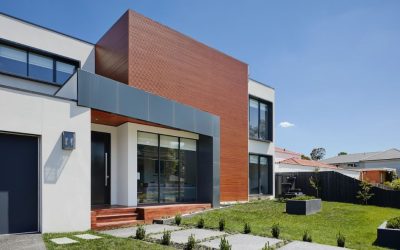Commercial buildings are the backbone of various industries, housing everything from offices and factories to warehouses and retail spaces. However, like any structure, these buildings will inevitably age, wear down, and become outdated over time. Staying on top of your building’s maintenance and upgrades is essential for keeping it functional, aesthetically pleasing, and compliant with current safety standards. This is where experts like Industrial Cladding Contractors can help by providing the necessary expertise to rejuvenate your building’s exterior. But how do you know when it’s time for an upgrade?
Here are five critical signs that indicate your commercial building may be in need of an upgrade.
1. Deteriorating Exterior
The exterior of your building is the first impression customers, clients, and employees have, and it plays a crucial role in protecting your property from the elements. Over time, exposure to weather conditions like rain, wind, and sunlight can cause wear and tear, leading to cracks, peeling paint, and faded surfaces.
Cladding Contractors can help address these issues by installing new cladding systems that not only enhance the aesthetic appeal of your building but also provide extra insulation, energy efficiency, and weather protection. High-quality industrial cladding options such as metal, stone, or composite panels are durable and provide a long-lasting facelift that can significantly improve the exterior appearance and functionality of your building.
Signs that your building’s exterior needs attention include:
- Cracked or chipped surfaces
- Faded or peeling paint
- Visible rust or corrosion on metal components
- Water stains or damp spots on walls
- Loose or broken façade elements
If you notice these signs, it’s time to consider upgrading your exterior with modern materials and designs that offer durability and enhanced performance.
2. Energy Inefficiency
One of the biggest drains on a commercial building’s profitability is energy inefficiency. If your building’s HVAC system is constantly running overtime, your windows are drafty, or your insulation is insufficient, you could be losing a significant amount of energy. Not only does this lead to higher utility bills, but it also contributes to an uncomfortable environment for employees and visitors.
A simple upgrade like installing energy-efficient windows, doors, and cladding can significantly reduce energy consumption. cladding contractors are skilled in installing cladding systems that improve insulation, reducing heat loss during winter and keeping the building cooler in summer. Energy-efficient cladding also helps in maintaining temperature stability, minimizing the strain on your HVAC systems.
Upgrading to energy-efficient building materials is not only a cost-saving move but also an environmentally responsible decision. Many cladding contractors can advise on the best materials for energy efficiency, such as insulated metal panels or eco-friendly composite cladding that can reduce your building’s carbon footprint.
3. Outdated Design or Functionality
A building’s appearance and layout must align with the needs of modern businesses and customers. If your commercial property still looks like it’s stuck in the previous century, it may be time for a design overhaul. Outdated designs can give the impression of a business that is behind the times, potentially turning away prospective clients or tenants.
Additionally, functionality is critical. Older buildings may not meet current accessibility standards or may have outdated facilities that do not meet the needs of today’s workforce. For example, open floor plans and collaborative spaces are becoming increasingly popular, but older commercial buildings may lack the flexibility to accommodate these trends.
By working with experienced professionals like cladding contractors, you can not only modernize the look of your building but also improve its functionality. These experts can replace outdated facades with sleek, contemporary cladding that reflects your company’s brand and values. You may also want to consider interior upgrades, such as reconfiguring spaces, improving lighting, or updating technology infrastructure, to ensure your building meets the demands of today’s market.
4. Structural Damage or Safety Hazards
The safety of your employees, clients, and visitors is paramount. Structural issues can compromise that safety, putting people at risk and leading to expensive repairs or even legal issues if left unchecked. Signs of structural damage can be subtle but should never be ignored. These include:
- Cracks in walls or foundations
- Sagging roofs or ceilings
- Water leaks or mold growth
- Warped or uneven flooring
- Broken or loose railings and stairs
If you notice any of these signs, it’s crucial to take immediate action. cladding contractors can assist in identifying potential exterior hazards and reinforcing your building’s façade with cladding materials that are designed to withstand harsh weather conditions and provide structural support. Safety upgrades are essential for meeting regulatory requirements and ensuring the well-being of everyone who uses the building.
Ignoring these signs of structural damage not only risks the safety of occupants but can also lead to higher costs down the line. Early detection and proactive upgrades can save time, money, and potential legal headaches.
5. Poor Indoor Air Quality or Ventilation
Indoor air quality (IAQ) is a vital aspect of maintaining a healthy and productive workplace. Poor ventilation, outdated HVAC systems, or the presence of mold and mildew can lead to respiratory issues, allergies, and an overall uncomfortable environment. If employees are frequently complaining about indoor air problems or if you notice visible signs of mold, it’s time to invest in upgrading your building’s air circulation systems.
Building upgrades aimed at improving IAQ can include replacing old windows and doors with energy-efficient models that provide better ventilation, upgrading HVAC systems, and installing cladding that enhances insulation and prevents moisture intrusion. cladding contractors can help by ensuring that your building’s exterior is properly sealed to prevent leaks and humidity buildup, which are common causes of mold growth and poor air quality.
Modern cladding systems also come with enhanced insulation and ventilation features, improving the airflow and helping regulate indoor temperatures without compromising energy efficiency. With the right upgrades, you can ensure your building maintains a healthy environment conducive to employee productivity and well-being.
Conclusion
If your commercial building is showing signs of wear, inefficiency, or outdated functionality, it’s time to consider an upgrade. Partnering with Cladding Contractors can help you address many of the common issues that plague aging commercial buildings, from structural damage to energy inefficiency and poor air quality.
By upgrading your building’s exterior with modern cladding systems, you can enhance its aesthetic appeal, improve energy efficiency, and ensure the safety and comfort of everyone who uses the space. Investing in these improvements now can save you significant costs in the long run while also increasing the value and usability of your property.
Keep an eye out for these five signs, and when they appear, take proactive steps to ensure your building continues to meet the needs of your business and its occupants for years to come.
- What Needs to Be Legally Disclosed When Buying a House: Essential Information for Homebuyers - October 3, 2024
- How Mastic Sealant Can Save Your Home from Damage - September 24, 2024
- 5 Signs Your Commercial Building Needs an Upgrade - September 24, 2024



